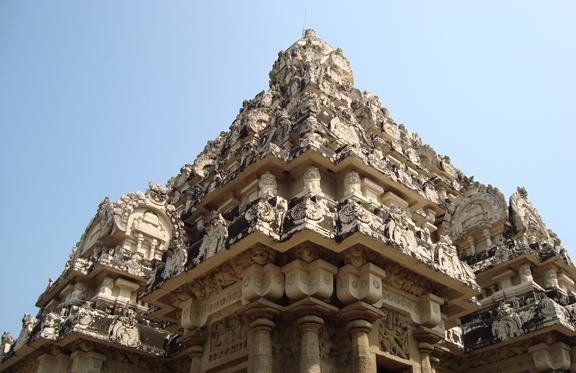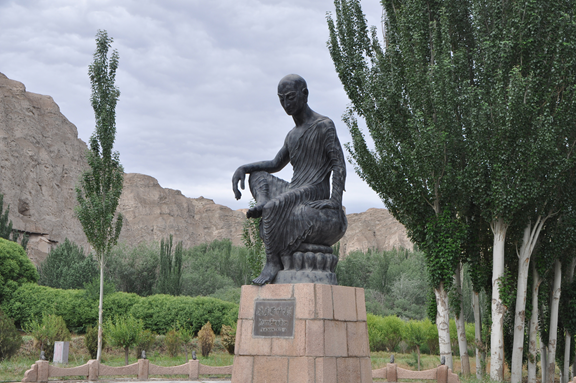Choices, choices
A student who completed basic education in ancient India and wished to learn more, had a plethora of institutions to choose from, depending on whether he wanted to specialise in the Vedas, logic, medicine, sciences, classical music or any other subject. Thus, a student who wanted to learn classical music could, for instance, move to Varanasi and learn from the maestros in the city’s ancient college of music. If he found a friend keen on studying in Varanasi’s college of astronomy, then perhaps the two could travel together. Travelling was a risky proposition in those days when the land was covered with forests abounding in predators, and parents would celebrate when their children returned home after four to 12 years of higher education.
In the Kathasaritsagara, there is a reference to a Brahmin, who decided not to send his son for further studies to Nalanda or Varanasi, which were closer to his place of residence in the Ganga plains and instead took the risk of choosing a far-off Valabhi university located in today’s Gujarat (Bose, 1990). Valabhi’s graduates were known to secure employment in government services. Its courses in political science (niti) and business (varta) were well known alongside religious studies of Hinayana Buddhism (Apte).
An interesting reference to co-education is found in the Sanskrit play Malatimadhava written by Bhavabhuti (in the eighth century) where a female student Kamandaki is indicated to be a classmate and close friend of male students Bhurivasu and Devarata at a famous university in Padmavati. All three characters hail from different regions. (Mirashi, 1996)
There seems to have been a remarkable mobility of students and teachers across the universities of ancient India. Thus, we find professors in Nalanda, such as Sthiramati and Gunamati who had earlier established Valabhi University in the west. Dinnaga and Dharmapala, two famous scholars of Nalanda were both natives of Kanchipuram in the south. Ratnavajra, a noted professor at Vikramshila hailed from Kasmira (Kashmir). Xuanzang himself, after finishing his studies in Nalanda went to teach in Orissa upon receiving a directive from King Harsha (Mookerjee, 1960). The famous Bhaskara II, hailed by some as the greatest mathematician ever, taught at Ujjaini, but hailed from Bijapur in the south (Puttaswamy, 2012). Clearly, many of the learned people of yore travelled to centres of excellence in their areas of interest.
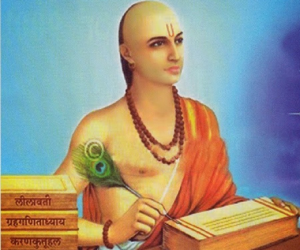
Bhaskara II, head of the astronomical observatory at the famous Ujjaini University in central India was a native of Bijapur in southern India.
Funding of higher education
An interesting aspect about the education system was that it was subsidised for pupils and teachers by the ruling kings as well as communities that lived around universities. The Nalanda University was described by Xuanzang as having been endowed with buildings and lands by ruling kings of the time. He also mentions that the revenues of 100 villages were allocated for meeting the expenses of the university. The students and teachers received clothes, food, bedding and medicine free of cost. (Mookerjee, 1960)
However, according to the Jatakas, students who wished to study at Takshshila were required to either pay their tuition fees at the beginning or if they lacked cash, to pay in the form of services to the teacher, such as bringing firewood. Most Brahmin students were too poor to pay upfront and would opt to carry out menial tasks. Some would get permission to pay at the end of their studies, and there were instances of Brahmin students soliciting financial assistance from households. We also hear of some winning state scholarships and not being required to pay any fees. Often, families living around the universities would generously host meals at their residences for the students. (Mookerjee, 1960)
There was a well-established ecosystem to support learning. Since the ethos of the times demanded that Brahmin scholars lead a simple life engaged in the pursuit of knowledge without amassing riches, it fell upon the shoulders of wealthy non-Brahmin families as well as humble farmers to support those who were devoting their entire lives to learning and teaching (Hazra, 1987).
Graduating the Indian way: Samavartana
Given that ancient Indians set so much store by learning, it should not come as a surprise that they had a meaningful rite of passage to mark the graduation of students, called Samavartana or Snana. In the presence of students, teachers and invited guests, the graduating student would offer his guru-dakshina (gift to guru), after which the guru would recite the snataka-dharma from the Taittiriya Upanishad. This would be followed by a homa (fire ritual) and snana (ceremonial bath). (Kane, 1941)

The Snataka Dharma recitation from Shiksha Valli in the Taittiriya Upanishad was an important ritual in the graduation ceremony.
A partial translation of the Snataka Dharma recitation is as follows:
Never deviate from Truth,
Never deviate from Dharma,
Never neglect your well-being,
Never neglect worldly activities (for gain and welfare),
Never neglect Svādhyāya (self study) and Pravachana (teaching of Vedas).
We all know the famous shloka
Maatru devo bhava,
Pitru devo bhava
Acharya devo bhava
Atithi devo bhava
This verse stating that one’s mother, father, teacher and a visiting guest are all equivalent to Devata comes from the Taittiriya Upanishad, which also was recited during the Samavartana. Equipped with holistic knowledge and blessings from the guru, a graduate or vidya-snataka (one who is bathed in learning) would be ready for the next stage of life – usually teaching and of course, marriage.
The temple universities of India
An interesting aspect about ancient Indian temples is that often, they became centres of knowledge dissemination and debating. There was a continuity of learning with conferences and assemblies of learned scholars that have been mentioned in the Rig Veda itself, for disseminating the philosophies that form the core of Vedic literature. Well-endowed temples became magnets attracting students and teachers, which led to annexes being built for the temples and even entire colonies housing intellectuals from a variety of disciplines.
Multiple inscriptions on several temples of southern India reveal the extent to which higher education had got institutionalised. Ennayiram is one such location in Tamil Nadu, which abounds in inscriptions giving minute details related to the subjects taught, number of students, endowments and so on. For example, an inscription from the time of Rajendra Chola I (11th century) lays out the endowments given for the boarding and tuition of 340 students studying at a Vedic college. The college received 45 velis (300 acres) of land. Each student of Veda was noted to cost 6 Nalis of paddy per day and ½ Kalanju of gold per year. A student studying the more advanced Vedanta, Mimamsa or Vyakarana got 66% more. Meanwhile, a teacher was noted to receive a meal allowance equivalent to that of 16 students per day. The inscription notes that 75 students were studying the Rig Veda, 75 Yajur Veda, 10 Atharva Veda, 20 Chandoga Saman, 20 Talavakara Saman, 20 Vajasaneya, 25 Vyakarana, 35 Prabhakara Mimamsa, 10 Baudhayaneya Grihya, Kalpa and Gana, 40 Rupavatara and 10 Vedanta (Mookerjee, 1960). In 2013, archaeologists found more lines of inscriptions in the basement of a temple in Ennayiram (Subramanian, 2003). Clearly, there is a lot more waiting to be unearthed.

A temple inscription in Ennayiram, Tamil Nadu describing a college attached to a temple along with a hostel and hospital. Photo courtesy: Tamil Nadu Tourism (http://tamilnadu-favtourism.blogspot.sg)
Even the medical care of students was accounted for. Some inscriptions describe colleges with attached hospitals and hostels. One hospital is described to have 15 beds, a physician, a surgeon, two errand boys and two nurses. It was even equipped with a pharmacy with medicines such as Haritaki, Bilvadighrita, Vajra-kalpa and Kalyanalavana. (Mookerjee, 1960)
Ancient academies of excellence
Apart from temples, there was the ghatika, the agrahara and the mathha. Ghatikas were groups of learned acharyas, which carried out deep discussions on Vedic matters. Ghatikas are said to have played a key part in making Kanchipuram (also called Kanchi) a hub of Vedic studies. They even played a pivotal role in the selection of kings. Numerous poet-scholars and saint-philosophers who produced the finest of Tamil literary works are associated with Kanchi (Rao, 2008). As we have seen earlier, some of the brightest went on to teach in famed universities in other parts of India.
Agraharas were entire settlements of learned Brahmins with their own rules of governance and were funded by generous donors (usually non-Brahmins). Mathhas were also educational institutions and along with Agraharas served like modern academies of excellence (Mookerjee, 1960).
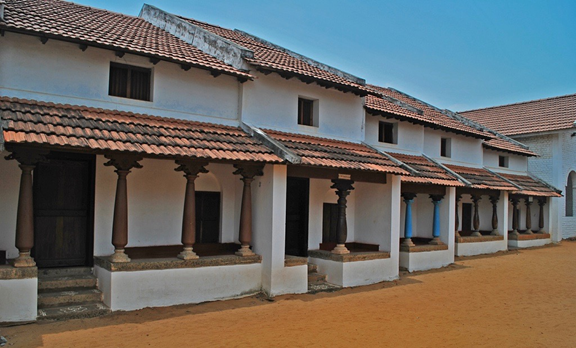
Agraharas were entire settlements of learned Brahmins. Photo courtesy incredibleindiaphotogallery.com
Inscription after inscription in southern India talks of the revenues of villages being entirely allocated for supporting agraharas with Brahmin scholars sometimes numbering 108, sometimes 308. The revenues were to be used in supporting the sacred task of learning and teaching, which included building libraries called “Sarasvati Bhandara” (Mookerjee, 1960). The learned Brahmins, who often held titles such as Chaturvedin,
Trivedin, Somayajin, Shadangavid, Bhatta, Kramavid, Sarvakratuyajin and Vajapeyin, which denoted their specialisation in different texts. Mookerjee puts it eloquently when he says:
“These learned settlements were centres of light and life, showing how theory and practice should go together, how precept should be supported by example, ethics by conduct, learning was to be lived and truth or religion was to be realised in the activities of daily life.”
It is important to highlight the contribution of the Kerala school of mathematics and astronomy (14th to 15th century) in the context of Indian systems of advanced learning. Concentrated in a geographical area around Thrissur in Kerala, a rich tradition of mathematics developed and flourished amongst the Namboodri Brahmins. They discovered the infinite series, which laid the foundation for calculus centuries before Newton. There is strong circumstantial evidence that Jesuit missionaries who visited India in the 15th century carried back mathematical concepts from Kerala to Europe (Joseph, 2000).
The brilliant scholars of Kerala were believed to be mainly motivated by the mysteries of astronomy. However, George Gheverghese Joseph, in his famous book The Crest of the Peacock – The non-European Roots of Mathematics argues that these mathematicians seem to have revelled in their love for pure mathematics. Why else would Madhava (the founder of the Kerala School) indulge in long and tedious calculations of sine tables to 12 decimal places?
Famous names associated with the Kerala School are Parameshvara, Neelakanta Somayaji, Jyeshtadeva, Achyuta Pisharati, Melpathur Narayana Bhattathiri and Achyuta Panikkar. GG Joseph points out that some non-Brahmins such as Sankara Variyar and Acyuta Pisarati were also part of the Kerala School and many from “lower” castes, such as carpenters, construction workers and artisans were conversant with precise calculations, indicating that the symbiotic society did not fit into the neat framework of the caste system envisaged by modern researchers.
How Indian scholars transferred knowledge to China
In the first century CE, Chinese emperor Ming-Ti sent 18 persons to study Buddhist doctrines in India. When they returned, they took back many books and also two Buddhist scholars Kasyapa Matanga and Dharmaratna. Kasyapa was in Gandhara, when he was invited by the Chinese envoy. His journey from Gandhara to China was fraught with hardship as he passed through the steep mountains of Chinese Turkestan and the harsh Gobi desert. There was also a language problem. However, the two pioneering scholars persevered and opened up opportunities for hundreds of professors from Indian universities to work in China. A large number of Sanskrit manuscripts were carried to China. Among the well-known Indians who migrated in the first three centuries were Samghavarma, Dharmasatya, Dharmakala, Mahabala, Vighna, Dharmaphala, Kalasivi, Kalaruchi and Lokaraksha (Mookerjee, 1960).
Kashmir, which was a prominent centre of Buddhist learning supplied a steady stream of erudite scholars to China. One such scholar Gunavarman from Kashmir’s royal family first went to Ceylon and Java where he made a name for himself. The Chinese emperor invited him to China, personally received him in Nanking, became his disciple and built a temple for him. A few scholars from southern India also got pulled to China, such as Dharmaruchi who lived in China for 20 years between 693 to 713 CE and translated 53 works into Chinese (Mookerjee, 1960).
Hundreds of Sanskrit works were painstakingly translated into Chinese by the Indian scholars with the help of Chinese intellectuals. It was a mammoth task considering the totally different syntax and structure of the two languages and many scholars even recorded their struggle and discomfort.
The first printed book in China was the Indian treatise Vajjra-Chhedika-Prajna-Paramita Sutra (or the famous Diamond Sutra), which was translated into Chinese by Kumarajiva in 402CE. Kumarajiva was prodigiously talented. He studied in Kashmir, Kashgar and Koutcha, and it is said there was a battle for his services between the King of Koutcha and the Chinese Emperor, whose general imprisoned him. For 12 years, Kumarajiva translated more than 100 Sanskrit works, which are considered masterpieces of Chinese literature! He is also known as the teacher of the famous Chinese traveller Fa-Hien (Mookerjee, 1960).
Unlike Kumarajiva, another scholar, Dharmakshema’s life was cut short by an assassin, when two Chinese rulers competed for his services. Reference is also found to a well-travelled and much-in-demand scholar Amoghavajra who earned titles such as Prajna-moksha and Tripitika Bhadanta from a Chinese emperor. The poor man was made to return from the shores of India the very moment he landed back in the year 749 because the Chinese emperor decided there was little time to be lost. It is not just in modern timelines that employees get called back from vacations by hard-hearted bosses. Amoghavajra collected more than 500 texts from different parts of India to take back to China and translated at least 77 works, including Dharanis and Tantras. In China, he is known as the founder of Tantrik Buddhism (Mookerjee, 1960).
Several Indian mathematicians and astronomers from the best universities held high positions in China’s scientific establishments. One Indian scientist called Gautama Siddha (Qutan Xida in Chinese) became the president of China’s official board of astronomy in the 8th century. He translated the Indian navagraha calendar into Chinese. He also introduced Indian numerals into China. The invention of printing is also attributed to Buddhist scholars who went from India to China and printing was used as a means to spread Buddhist thought. (Sen, 2009)
Knowledge transfers from India to Greece, Islamic world and Europe
The antiquity of civilisation and the ecosystems set up for the propagation of knowledge turned India into a veritable garden with exquisite flowers that attracted honeybees. Royle, in an essay on the antiquity of “Hindoo medicine” mentions Barzouyeh, a royal physician in the court of Persian King Khosrau (531-579 CE), who returned from India with medical texts as well as a variety of herbs and who was proficient in Sanskrit (Royle, 1837). There was a thriving trade between India and western Asia in ancient times, which involved not just spices and textiles, but also medicines.
In his talks on the antiquity of Indian medical systems, Raj Vedam, co-founder of Indian History Awareness and Research has laid out the trajectory by which the knowledge of Ayurveda was transmitted from India to Greeks/Romans, the Islamic world and then Europe. He points out how the scientific concepts articulated by the Indian Rishi Kanada (6th Century BCE), for example, were taken up by the Greek philosopher Democritus (4th Century BCE). According to Bertrand Russell, Democritus travelled widely and had visited Egypt and Persia “in search of knowledge”. Hippocrates, considered the father of western medicine was a student of Democritus.
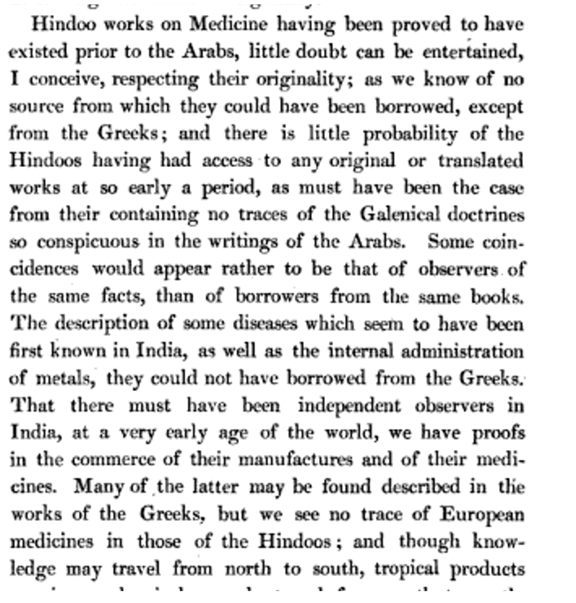
Excerpt from page 62 of JF Royle’s “An Essay on the Antiquity of Hindoo Medicine Including an Introductory lecture to the Course of Materia Medica and Therapeutics delivered at the King’s College”
Dr Vedam also states that the library of Alexandria played a major role in transmitting texts from the East to the West. It has been well chronicled that the library administrators went to any extent (“buy, borrow or steal”) to get the “most original, most authoritative copies” (Philips, 2010). The Materia Medica compiled by Greek physician Dioscorides during 50 to 70CE, which was used for 16 centuries in Europe, contains a large number of Indian herbs (Vedam, 2016). Another data point offered by Dr Vedam is the fleeing of Nestorians to Persia to escape the persecution of the Christian Church and from there to Kerala in the fifth century that served to transmit Indian medical knowledge back to Syria.
The fifth Abbasid Caliph Haroun Al Rashid had an Indian physician Manka in his court, who translated ancient India’s indispensable medical text – the Sushruta Samhita into Persian. The imprint of Indian scholars on Islamic sciences, not just medicine has been well-acknowledged by the Islamic scholars such as Alberuni themselves. Indian scholars were often invited to Baghdad. The works of Muslim intellectuals such as Al Kindi, Al Farabi, Al Farghani, Al Tabari and Al Khwarizmi played a paramount role in transferring Indic knowledge of mathematics, medicine, astronomy, philosophy, chemistry and even music to the Islamic world (Khan, 2009). While the Islamic scholars often credited their knowledge to Indic sources, the European scholars often plagiarised from Arabic texts without references. The Renaissance was propelled by the works of Arabic scholars, which were passed off as original works by Europeans (Hasse, 2016).
In the 12th and 13th centuries, the Toledo School of Translators in Spain employed many scholars to translate major Arabic works into Latin (Bronowski, 2011). These translators produced a prolific output and helped to transfer a substantial amount of ancient Indian knowledge to Europe. The transfers continued with even greater intensity during the colonial period from the 14th century onwards when the contents of hundreds and hundreds of Indian books made their way into monographs and books in Europe. A catalogue of the Indian books and manuscripts that were translated into European languages during this period would itself form a bulky book! A case in point is the Bibliotheca Malabarica, a catalogue of over 100 Tamil manuscripts collected by the missionary Bartholomäus Ziegenbalg during his first two years in India (1706–1708).
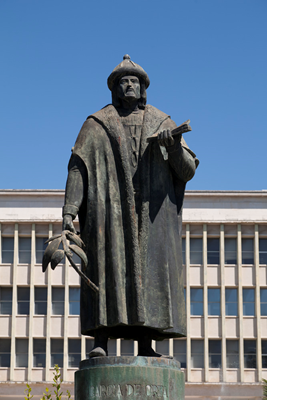
Garcia D’Orta, Portuguese traveller to India wrote a detailed treatise “Colóquios dos simples e drogas da India” on the medicinal plants of India in 1563. Photo Courtesy Martins Correia.
We have seen how India’s ancient systems of education helped to fuel a knowledge revolution around the world. However, in the 11th century, marauding incursions by Muslim invaders disrupted the idyllic world of university learning in India. This was followed by European colonisation, which led to further erosion and degeneration of India’s traditional learning systems. All this and more will be discussed in the next article, which will conclude this series.
The author would like to acknowledge the valuable inputs of the members of Indian History Awareness and Research (IHAR) and specially thank Kanniks Kannikeswaran for supplying pictures from his personal collection.
Bibliography
Apte, D. Universities in Ancient India.
Bose, M. (1990). A Social and Cultural History of Ancient India. Concept Publishing Company.
Bronowski, J. (2011). The Ascent of Man. BBC Books.
Hasse, D. N. (2016). Success and Suppression: Arabic Sciences and Philiosophy in the Renaissance. Harvard University Press.
Hazra, R. C. (1987). Studies in the Puranic Records on Hindu Rites and Customs. Motilal Banarsidass.
Joseph, G. G. (2000). Crest of the Peacock, Non-European Roots of Mathematics. Princeton University Press.
Kane, P. (1941). History of Dharmashastras Vol II, Part I. Bhandarkar Oriental Research Institute.
Khan, M. (2009). Islamic Jihad – A Legacy of Forced Conversion, Imperialism and Slavery. iUniverse.
Mirashi, V. V. (1996). Bhavabuti. Motilal Banarsidass.
Mookerjee, R. K. (1960). Ancient Indian Education – Brahminical and Buddhist. Motilal Banarsidass.
Muller, M. Lectures on the Science of Knowledge delivered at the Royal Institution of Great Britain in April, May and June 1861, 1868.
Philips, H. (2010). The Great Library of Alexandria?
Puttaswamy, T. (2012). Mathematical Achievements of Pre-Modern Indian Mathematicians. Elsevier.
Rao, P. N. (2008). Kanchipuram: Land of Legends, Saints and Temples. Readworthy Publications.
Royle, J. F. (1837). An Essay on the Antiquity of Hindoo Medicine Including an Introductory lecture to the Course of Materia Medica and Therapeutics delivered at the King’s College. Allen.
Russell, B. (1972). History of Western Philosophy. Simon & Schuster.
Saraswati, S. D. (2016). Taittiriya Upanishad. Arsha Vidya Research and Publication Trust.
Sen, A. (2009). The Argumentative Indian: Writings on Indian History, Culture and Identity. Allen Lane.
Subramanian, P. (2003). 100 year old, long Tamil inscription found.
Vedam, R. https://www.youtube.com/watch?v=TtoXaR7wgiI. (2016). Lecture on Antiquity of Indian Medical Systems [Youtube Video].
Disclaimer: The facts and opinions expressed within this article are the personal opinions of the author. IndiaFacts does not assume any responsibility or liability for the accuracy, completeness,suitability,or validity of any information in this article.
Sahana Singh writes on environmental (water) issues, current affairs and Indian history. She is a member of Indian History Awareness and Research (IHAR), and has recently authored “The Educational Heritage of Ancient India – How An Ecosystem of Learning Was Laid to Waste”.

